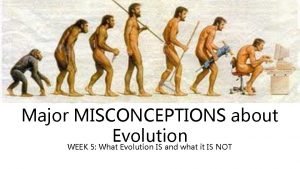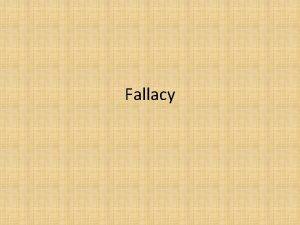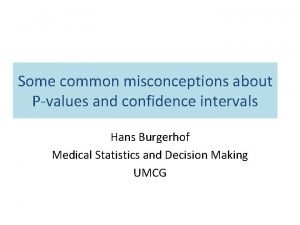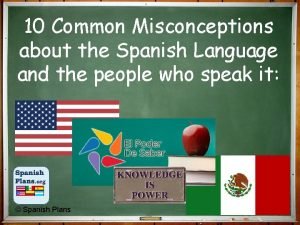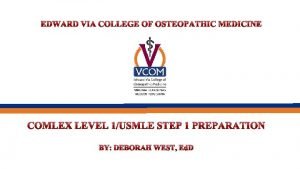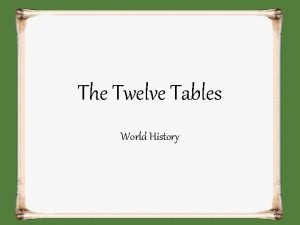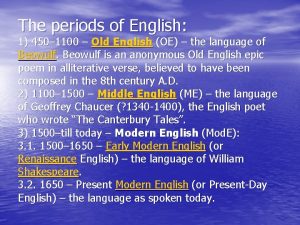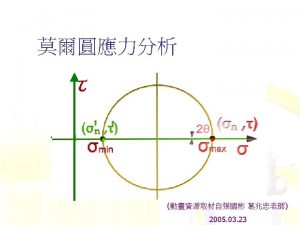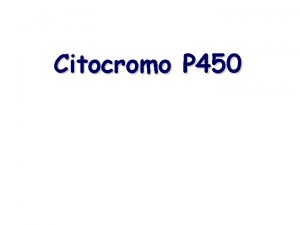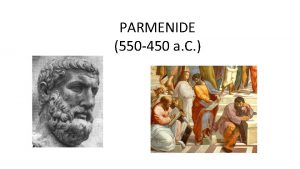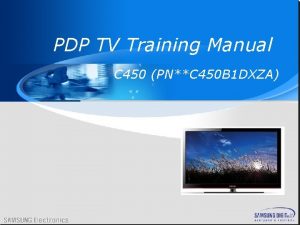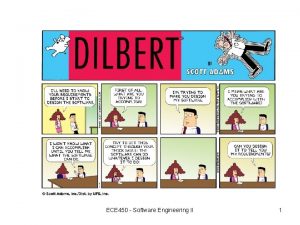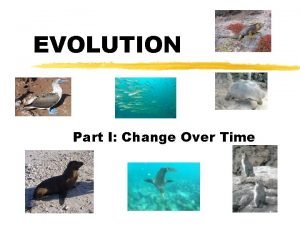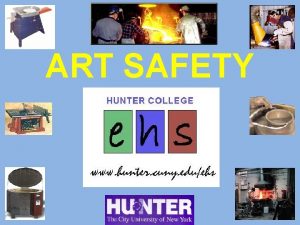Chapter 13 section 1 Misconception pg 450 Misconception









- Slides: 9

Chapter 13 section 1

Misconception pg 450 Misconception: Some people think that the plant food they give to house and garden plants is food for the plants. It isn’t. Plants make their own food—in the form of sugars—using water, carbon dioxide, and sunlight. So what is the “food” that people add to plants? It’s fertilizer. Fertilizer is a mixture of minerals, such as potassium, calcium, and phosphorus. It helps plants grow but doesn’t supply them with energy as food does. Farmers add fertilizer to soil to grow better quality crops. People do the same to grow bigger and healthier plants at home.

Chloroplast in detail • Most trees aren't green. Chlorophyll reacts with the sun and produces the green pigment on leaves. In the absence of sunlight, the true color of plants can be seen. (change of leaves during fall) • They also act like a solar cell, capturing the energy in light and converting it to a form that is used in photosynthesis. • Is this a chemical or physical change? How do you know?

• The process by which a cell captures energy in sunlight and uses it to make food is called photosynthesis. • During photosynthesis, plants and some other organisms absorb energy from the sun and use the energy to convert carbon dioxide and water into sugars and oxygen. • It takes place in two stages: 1. Plants capture the suns energy 2. Plants produce sugars Which are the reactants and which are the products?

Stage 1 capturing the sun’s energy • Plant leaves capture sunlight which is energy for them. • The water in the chloroplasts is split into hydrogen and oxygen. The oxygen is given off as a waste product and the hydrogen is used in stage 2 see pg 453

Stage 2: Using Energy to make Food • In the second stage of photosynthesis, cells produce sugars. • Cells use hydrogen (H) that came from splitting of water in stage 1 and they use carbon dioxide from the air in a series of reactions that results in sugars. • The carbon dioxide enters the plant through small openings on the undersides of the leaves and moves into the chloroplasts.

Sugar as a bi-product of photosynthesis. • One important sugar produced is glucose (C 6 H 12 O 6). Sugars are a type of carbohydrate. They use the energy in glucose to carry out vital cell functions. • The other product of photosynthesis is oxygen gas O 2. Oxygen forms during the first stage when water molecules are split apart. The gas exits a leaf through the openings on its underside. • Almost all oxygen in Earths atmosphere is produced by living things through photosynthesis. • Complete pg 454


The photosynthesis equation • The events of photosynthesis that lead to the production of glucose can be summed up with an equation • Light energy + 6 CO 2 + 6 H 2 O --- C 6 H 12 O 6 +6 O 2 • The 6 carbon dioxide and 6 water molecules on the left are raw materials. On the right you have one molecule of glucose and six of oxygen which are the products • An arrow means yields. It points from the raw material to the products • Sugars are used for food and energy. Can also make other compounds such as cellulose for cell walls. When you eat potatoes or carrots you are eating the plants stored energy. • Complete pg 455
 Trigonometri
Trigonometri Common misconception about evolution
Common misconception about evolution A misconception resulting from incorrect reasoning
A misconception resulting from incorrect reasoning Confidence interval misconception
Confidence interval misconception The canadian flag is red and white. cierto falso
The canadian flag is red and white. cierto falso Chapter 10 section 1 meiosis answer key
Chapter 10 section 1 meiosis answer key What is comsae
What is comsae Prime factorization of 144 using exponents
Prime factorization of 144 using exponents Si in ius vocat ito
Si in ius vocat ito 450/1100
450/1100

